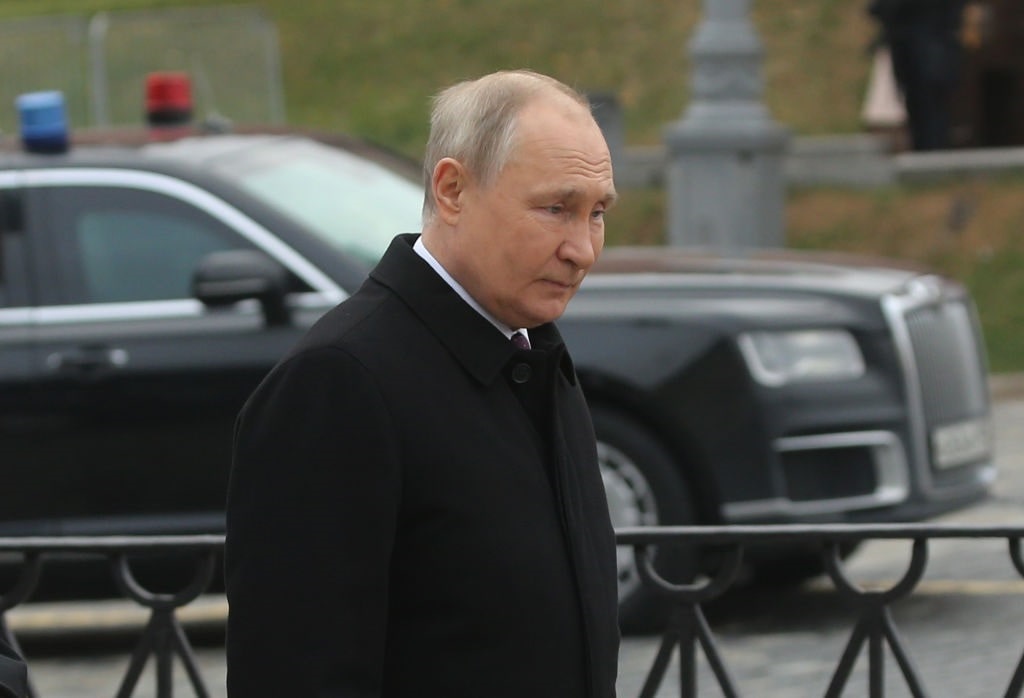Russia has pulled out of the nuclear test ban treaty, is well ahead of the United States in its nuclear modernization program, and has distanced itself from any responsible approach to regulating atomic weapons. In addition, on Nov. 7, the Kremlin withdrew from the Treaty on Conventional Armed Forces in Europe (CFE). The repudiation of two arms control treaties between major global competitors does not bode well.
The United States struggles to formulate an adequate strategy on how best to maintain nuclear deterrence as Russia, China, North Korea, and Iran move merrily on their paths to military superpower status. But short of thermo-nuclear war, agreements on how to manage conventional arms fare no better. Responding to news on Nov. 2 of the Kremlin backing out of the Comprehensive Nuclear-Test-Ban Treaty (CTBT), Secretary of State Antony Blinken lamented:
“We are deeply concerned by Russia’s planned action to withdraw its ratification of the Comprehensive Nuclear-Test-Ban Treaty (CTBT). Unfortunately, it represents a significant step in the wrong direction, taking us further from, not closer to, entry into force. Russia’s action will only serve to set back confidence in the international arms control regime … This continues Moscow’s disturbing and misguided effort to heighten nuclear risks and raise tensions as it pursues its illegal war against Ukraine.”
Blinken acknowledged Russian officials’ assurances that withdrawing from the CTBT does not indicate Moscow will immediately resume nuclear weapons testing. Yet what Moscow’s statement does not say is that Russian nuclear scientists will not assist Iran in atomic weapons testing. With their newfound mutual lovefest, Moscow and Tehran could agree to a joint nuclear assistance pact. At a minimum, the Kremlin could agree to provide Iran enriched uranium as it did for China. Iran is not a signatory to the CTBT and would have no reason or inclination to refrain from testing an atomic weapon if it had one.
Arms Control Agreements Fall by the Wayside

Vladimir Putin (Credit: Getty Images)
Following the Kremlin’s announced withdrawal from the CTBT, without missing a beat, “The Russian military on [Nov. 5] reported a successful test launch of an intercontinental ballistic missile designed to carry nuclear warheads from a new nuclear submarine,” Associated Press reported. Meanwhile, the United States tested a Minuteman III nuclear deterrent Intercontinental Ballistic Missile that failed. “The US Air Force said on [Nov. 1] it had blown up a Minuteman III missile over the Pacific Ocean after an anomaly was detected following its launch from Vandenberg Space Force Base in California,” Reuters observed. “Anomaly” is test lingo for “it didn’t work.” This missile was representative of 400 similar ones located in silos across the United States, establishing a single leg of America’s nuclear triad.
Furthermore, rather than simply confirming his disappointment at Russia’s decision, Blinken, in a flare of moral superiority, had to “reiterate our commitment to our zero-yield nuclear explosive testing moratorium, which has been in place for 30 years.” He could have been a little more firm, maybe suggesting: “If you test, we test. You help any other country test, we test.”
Not to be left out, National Security Advisor Jake Sullivan announced on Nov. 7:
“The combination of Russia’s withdrawal from the CFE (Treaty on Conventional Armed Forces in Europe) Treaty and its continuing full-scale war of aggression against Ukraine – another CFE State Party – has fundamentally altered circumstances that were essential to the CFE States Parties’ consent to be bound by the treaty, and radically transformed the obligations under the treaty. In light of this fundamental change of circumstances, the United States will suspend the operation of all CFE Treaty obligations between itself and every other State Party, effective December 7.”
The 1990 CFE Treaty was entered into by NATO, the Soviet Union, and the Warsaw Pact nations to establish a balance of conventional forces in Europe with the goal “of eliminating disparities prejudicial to stability and security and of eliminating, as a matter of high priority, the capability for launching surprise attack and for initiating large-scale offensive action in Europe.” Recently, the document has evolved into a guideline for arms control discussions among lower-level country representatives. But, as Sullivan explained, since Russia’s unprovoked invasion of Ukraine, both the spirit and letter of the CFE are meaningless and symbolically a foreign policy charade.
Symbolic treaties are fodder for cocktail party discussions in the Beltway but have little to no impact on real-world threats. When former President Donald Trump withdrew from the Intermediate-Range Nuclear Forces agreement, the United States was the only compliant participant. Now, all that is left to address nuclear arms control is the treaty between the United States of America and the Russian Federation on Measures for the Further Reduction and Limitation of Strategic Offensive Arms, or New START Treaty. How long that will last is uncertain.
The views expressed are those of the author and not of any other affiliation.




